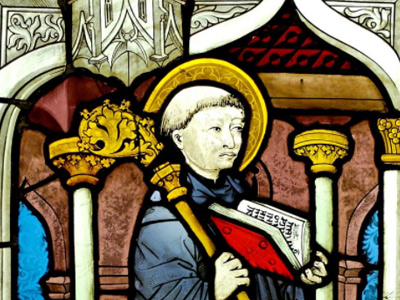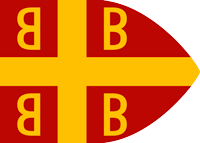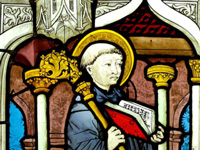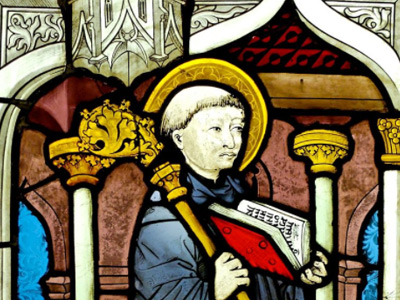Second Crusade (1147–1149)

Background: The Fall of Edessa
After the First Crusade and the minor Crusade of 1101, there were three crusader states established in the east: the Kingdom of Jerusalem, the Principality of Antioch and the County of Edessa. A fourth, the County of Tripoli, was established in 1109. Edessa was the most northerly of these, and also the weakest and least populated; as such, it was subject to frequent attacks from the surrounding Muslim states ruled by the Ortoqids, Danishmends and Seljuq Turks. Count Baldwin II and future count Joscelin of Courtenay were taken captive after their defeat at the Battle of Harran in 1104. Baldwin and Joscelin were both captured a second time in 1122, and although Edessa recovered somewhat after the Battle of Azaz in 1125, Joscelin was killed in battle in 1131. His successor Joscelin II was forced into an alliance with the Byzantine Empire The Byzantine Empire, also referred to as the Eastern Roman Empire or Byzantium, was the continuation of the Roman Empire primarily in its eastern provinces during Late Antiquity and the Middle Ages, when its capital city was Constantinople. It survived the fragmentation and fall of the Western Roman Empire in the 5th century AD and continued to exist for an additional thousand years until the fall of Constantinople to the Ottoman Empire in 1453., but in 1143 both the Byzantine emperor John II Comnenus and the King of Jerusalem Fulk of Anjou died. Joscelin had also quarreled with the Count of Tripoli and the Prince of Antioch, leaving Edessa with no powerful allies.
The Byzantine Empire, also referred to as the Eastern Roman Empire or Byzantium, was the continuation of the Roman Empire primarily in its eastern provinces during Late Antiquity and the Middle Ages, when its capital city was Constantinople. It survived the fragmentation and fall of the Western Roman Empire in the 5th century AD and continued to exist for an additional thousand years until the fall of Constantinople to the Ottoman Empire in 1453., but in 1143 both the Byzantine emperor John II Comnenus and the King of Jerusalem Fulk of Anjou died. Joscelin had also quarreled with the Count of Tripoli and the Prince of Antioch, leaving Edessa with no powerful allies.
Meanwhile, the Seljuq Zengi, Atabeg of Mosul, had added to his rule in 1128 Aleppo, the key to power in Syria, contested between the rulers of Mosul and Damascus. Both Zengi and King Baldwin II turned their attention towards Damascus; Baldwin was defeated outside the great city in 1129. Damascus, ruled by the Burid Dynasty, later allied with King Fulk when Zengi besieged the city in 1139 and 1140; the alliance was negotiated by the chronicler Usamah ibn Munqidh.
In late 1144, Joscelin II allied with the Ortoqids and marched out of Edessa with almost his entire army to support the Ortoqid army against Aleppo. Zengi, already seeking to take advantage of Fulk's death in 1143, hurried north to besiege Edessa, which fell to him after a month on 24 December 1144. Manasses of Hierges, Philip of Milly and others were sent from Jerusalem to assist, but arrived too late. Joscelin II continued to rule the remnants of the county from Turbessel, but little by little the rest of the territory was captured by Muslims or sold to the Byzantines. Zengi himself was praised throughout Islam as "defender of the faith" and al-Malik al-Mansur, "the victorious king". He did not pursue an attack on the remaining territory of Edessa, or the Principality of Antioch, as was feared. Events in Mosul compelled him to return home, and he once again set his sights on Damascus. However, he was assassinated by a slave in 1146 and was succeeded in Aleppo by his son Nur ad-Din.
Quantum praedecessores
The news of the fall of Edessa was brought back to Europe first by pilgrims early in 1145, and then by embassies from Antioch, Jerusalem and Armenia. Bishop Hugh of Jabala reported the news to Pope Eugene III, who issued the bull Quantum praedecessores on 1 December of that year, calling for a second crusade. Hugh also told the Pope of an eastern Christian king, who, it was hoped, would bring relief to the crusader states: this is the first documented mention of Prester John. Eugene did not control Rome and lived instead at Viterbo, but nevertheless the Second Crusade was meant to be more organized and centrally controlled than the First: the armies would be led by the strongest kings of Europe and a route would be planned beforehand.
The initial response to the new crusade bull was poor, and it in fact had to be reissued when it was clear that Louis VII of France The Kingdom of France is the historiographical name or umbrella term given to various political entities of France in the medieval and early modern period. It was one of the most powerful states in Europe since the High Middle Ages. It was also an early colonial power, with possessions around the world. Colonial conflicts with Great Britain led to the loss of much of its North American holdings by 1763. The Kingdom of France adopted a written constitution in 1791, but the Kingdom was abolished a year later and replaced with the First French Republic. would be taking part in the expedition. Louis VII had also been considering a new expedition independently of the Pope, which he announced to his Christmas court at Bourges in 1145. It is debatable whether Louis was planning a crusade of his own or in fact a pilgrimage, as he wanted to fulfil a vow made by his dead brother Philip to go to the Holy Land. It is probable that Louis had made this decision independently of hearing about Quantum Praedecessores. In any case, Abbot Suger and other nobles were not in favour of Louis' plans, as he would be gone from the kingdom for several years. Louis consulted Bernard of Clairvaux, who referred him back to Eugene. By now Louis would have definitely heard about the papal bull, and Eugene enthusiastically supported Louis' crusade. The bull was reissued on 1 March 1146, and Eugene authorized Bernard to preach the news throughout France.
The Kingdom of France is the historiographical name or umbrella term given to various political entities of France in the medieval and early modern period. It was one of the most powerful states in Europe since the High Middle Ages. It was also an early colonial power, with possessions around the world. Colonial conflicts with Great Britain led to the loss of much of its North American holdings by 1763. The Kingdom of France adopted a written constitution in 1791, but the Kingdom was abolished a year later and replaced with the First French Republic. would be taking part in the expedition. Louis VII had also been considering a new expedition independently of the Pope, which he announced to his Christmas court at Bourges in 1145. It is debatable whether Louis was planning a crusade of his own or in fact a pilgrimage, as he wanted to fulfil a vow made by his dead brother Philip to go to the Holy Land. It is probable that Louis had made this decision independently of hearing about Quantum Praedecessores. In any case, Abbot Suger and other nobles were not in favour of Louis' plans, as he would be gone from the kingdom for several years. Louis consulted Bernard of Clairvaux, who referred him back to Eugene. By now Louis would have definitely heard about the papal bull, and Eugene enthusiastically supported Louis' crusade. The bull was reissued on 1 March 1146, and Eugene authorized Bernard to preach the news throughout France.
HISTORY

RESOURCES
This article uses material from the Wikipedia article "Second Crusade (1147–1149)", which is released under the Creative Commons Attribution-Share-Alike License 3.0.
© Stories Preschool. All Rights Reserved.






